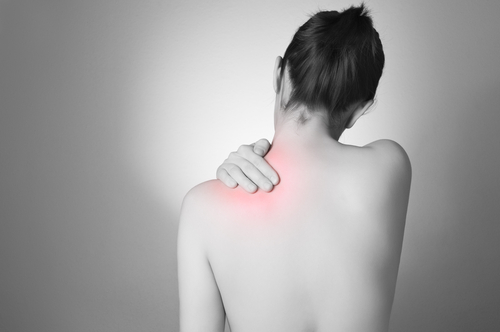Common Massage Therapist Injuries and How to Prevent Them

We know you love being a massage therapist and we hope that your schedule is full (well, as full as you want it to be).
But there are obvious physical demands that giving massage puts on your body. If you’re not careful, it’s all too easy to reach a point of fatigue or - even worse - injury.
One of the important values we like to stress here at At Peace Media is the importance of self care. If you are a massage therapy student, we’d like to encourage you to start establishing good self care practices now so that you can avoid burnout and fatigue. If you’ve been practicing a while, we hope you consider adding regular stretching and take regular breaks to avoid some of the most common massage therapy injuries. After all, the most important tool a massage therapist has is his or her own body.
Prevention and Protection
Here are a few general self-care techniques that will help maintain good health to meet the physical demands of massage therapy:
- Drink lots of water each day- at least 64 ounces.
- Get enough sleep each night - at least 6-8 hours.
- Take time for you at least once a week - whether that means reading a book, doing yoga, or going on a walk.
As a massage therapist, your focus is almost always on other people and tending to their needs, but that's not an excuse to neglect your own. So make sure you are doing everything in your power to stay healthy and strong, which includes adequate hydration, sleep, and self care. It's when we don't do those things that we're more at risk for injury. Let's take a look at some of the most common injuries and how to prevent them.
Most Common Massage Therapy Injuries
Hand and Arm Injuries
-
Tenosynovitis - Adhesions develop between tendons, usually near the base of the thumb and are caused by overuse. It's no wonder since hand, thumb, and finger movements are an essential part of almost every massage technique.
Prevention: Stretch tendons after each massage. Self-massaging the tendons can also help reduce the adhesions. -
Carpal Tunnel Syndrome - Compression of the median nerve in the carpal tunnel is caused by overuse of the wrist joint and/or fingers. The tricky issue with carpal tunnel is how long it can take to heal and the frequency with which it occurs, both of which can greatly affect a massage therapist's ability to work.
Prevention: Stretching, self-massage, and conditioning (especially to the forearm and hand) should help over time.
Neck and Shoulder Injuries
-
Postural Neck Strain - Neck strain is fairly common among the general population, but it's even more so among the massage therapists.
Prevention: According to Joseph Muscolino, "The physical stress load on the neck extensors can be largely eliminated if we do not hold our neck in flexion." He believes that neck strain can be relieved by simply not looking at their strokes. "The posture required to look at our strokes is usually an imbalanced flexion position with the head over thin air instead of balanced over the trunk." -
Shoulder Strain - It's a common issue among massage therapists because we have (incorrectly) learned to generate pressure from our shoulders. And our arms are so frequently held in a position of flexion (or abduction) when manipulating soft tissue.
Prevention: Learning to generate deep pressure from the core of the body is key.
Emotional Strain
-
Not having an adequate support system - We're not going to minimize the stress of having your own business and dealing with finances and learning new techniques and trying to market (and...and...and...). If you feel isolated, lonely, or bored, those may be signs of burnout.
Prevention: Reach out. Support can take many forms - family, friends, mentors, peer groups, etc. And we're probably preaching to the choir here, but taking time for self care is invaluable. (Really!)
Although you love what you do, it's important to ensure that you are taking care of you so that you can continue to help clients.

